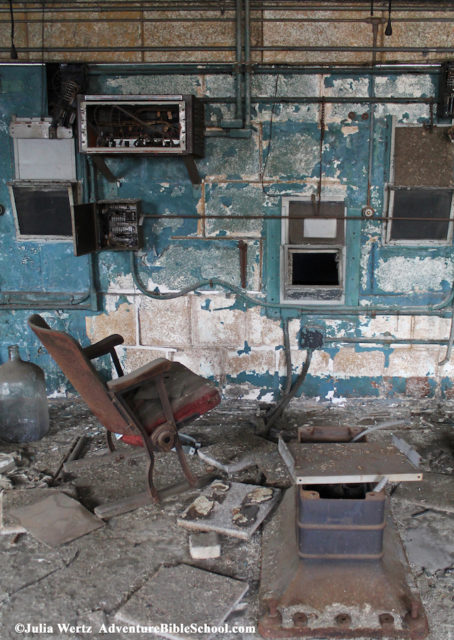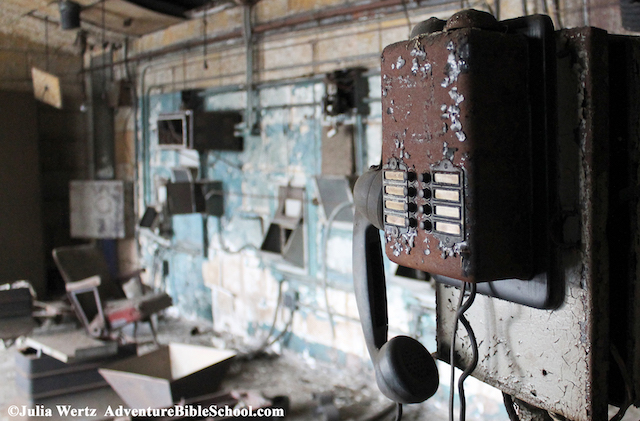Proctor’s Palace Theater is located in the center of Newark in the state of New Jersey and was opened on Thanksgiving, November 25, 1915.
Today, the theater is abandoned, and the center of Newark is a bit like a ghost town, with businesses still carrying on at street level, but so many buildings abandoned above the first floor.
The building which houses the theater consists of eight floors. The main theater was located on the first four floors.
The remaining floors above actually incorporated another theater, known as Proctor’s Roof Theater. Constructing one theater above another in a “double-decker” style was rare at that time.
Frederick Proctor, a former acrobat, was both the owner and the builder of the theater. He entrusted the development of the design to his nephew, an architect named John W. Merrow.
The bigger theater boasted between 2,300 and 2,800 seats (depending on which reports you read) with an orchestra pit and two balcony levels.
The second theater was smaller and offered only 900 to 1,400 seats. The 40-foot lobby had murals painted by the artist William de Levichwich Rain to entertain the guests while they waited for the show to start.
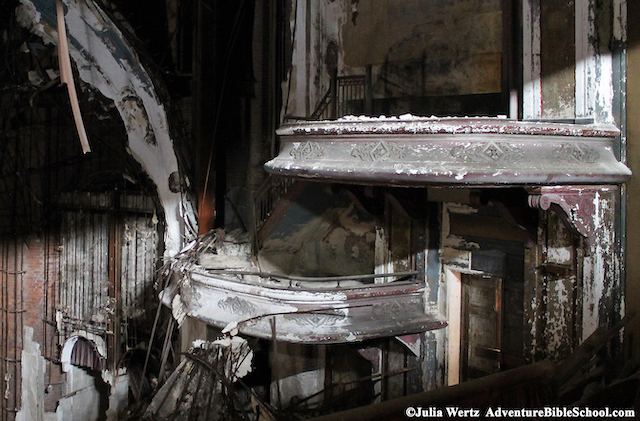
With so much open space, the theater was one of the largest places in the local area. Consequently, in 1916, it was chosen as the venue to celebrate the 250th anniversary of the city of Newark.
At that time, most theaters offered vaudeville performances, which could be a drama or comedy show interspersed with songs – a sort of precursor to the modern variety show.
Proctor’s Palace Theater was no exception, and to begin with, the theater functioned exclusively as a vaudeville theater.
Proctor’s Palace grew to become one of the leading theaters in Newark. It was also distinguished by two huge balconies. After 1926, the theater started to offer movie screenings as well as vaudeville plays.
A projection booth was installed at the rear of the second balcony, and by 1929, the theater showed only movies.
On September 4, 1929, the owner of the theater, Frederick Proctor, passed away due to a lung infection.
Shortly before his demise, he had sold his theater to the corporation Radio-Keith-Orpheum (more commonly known as RKO). The deal took place on May 14, 1929, when his health was already starting to decline.
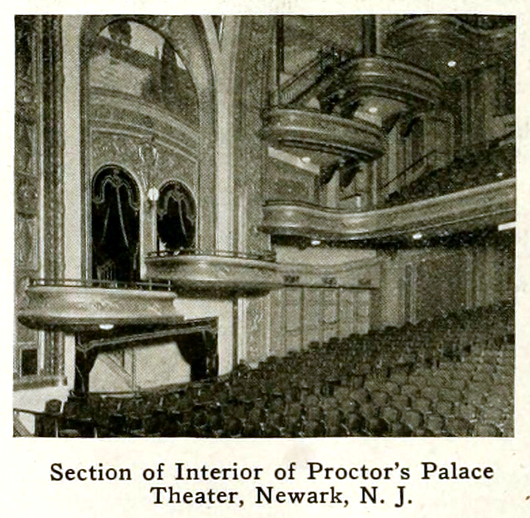
The name of the theater was changed to the RKO Proctor’s Theater. A little while later, demand for its shows began to decline.
This was partly because the upper tiers provided a poor view of the movie being screened. As a result, the number of seats in the lower theater was decreased in 1931.
However, although demand for the theater had lessened, it was still there. So, in 1953, the theater was updated with new technological equipment.
It housed a Miracle Mirror Screen, which showed not only a widescreen viewing but also offered 3-D viewings. A Stereophonic Sound System was installed, and the lobby was also modernized.
In mid-1961, the Upper Theater was renamed the Penthouse Cinema. Before that, it hadn’t really been used and most of the commerce had been focussed on the big theater below.
But a decision was made that this upper theater would be used exclusively for screenings of foreign films.
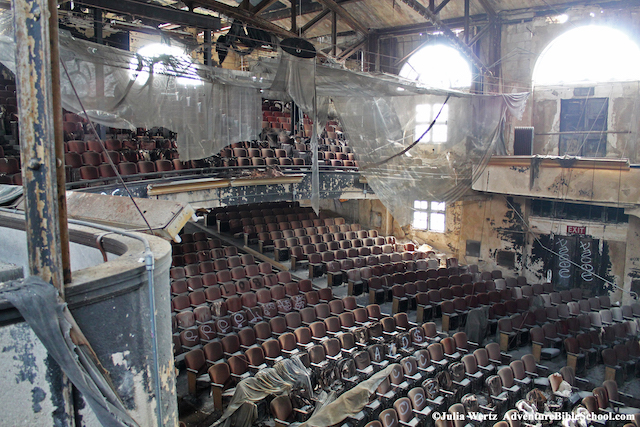
In the 1960s, the US experienced a general economic downturn. Unemployment affected the city of Newark as well as racial tension due to unequal civil rights. This led to significant unrest for some time.
In July 1967, a six-day riot began, which resulted in the destruction of much of the city’s property, as well as robbery and arson.
Many people were injured and double the number were arrested. Due to the destruction wreaked between July 12-17, many businesses were forced to close down. As people began leaving the city, business at the theater steadily declined.
In 1968, RKO merged with Stanley-Warner. Stanley-Warner owned the Branford Theater, which was also located in Newark and much more profitable than Proctor’s Theater.
The new leadership decided to close Proctor’s Theater the same year. Since then, the theater has been closed and has never been used for its original purpose.
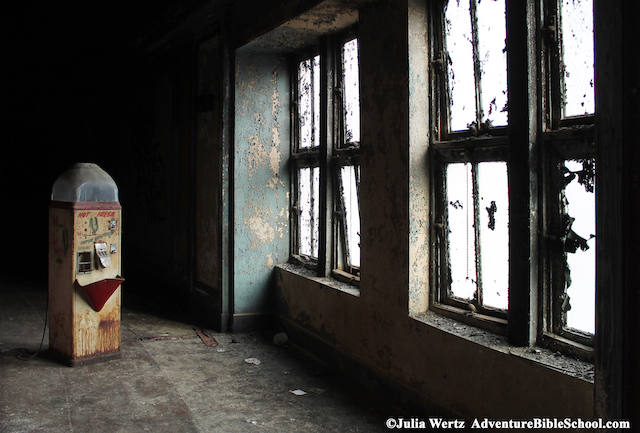
After closing, the theater was temporarily used by Essex County College while their new campus was under construction. After that, it was decided to repair the lobby to accommodate a shoe store. The remaining seven floors remained abandoned.
Over the next few decades, the premises began to collapse into ruins. The decorative ornamentation of the ceiling has been lost as the ceilings have collapsed.
The top theater, which has plenty of natural light, is covered with graffiti. However, vandals and street artists seem to have left the lower theater alone, possibly because it’s got no windows and is too dark to mess around in.
A huge thank you to Julia Wertz for allowing us to share her amazing photographs of abandoned Proctor’s Palace Theater.
Julia Wertz is a professional cartoonist, amateur historian, and part-time urban explorer/photographer. Her photography of abandoned places has appeared in The New York Post, the Daily Mail, and some local newspapers.
Find more information about her books and photography on her website – AdventureBibleSchool.com. Enjoy!
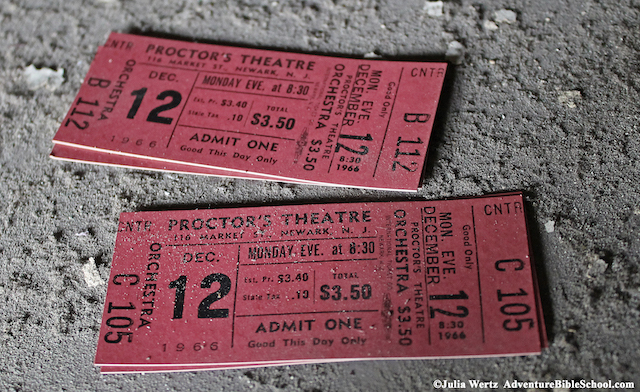
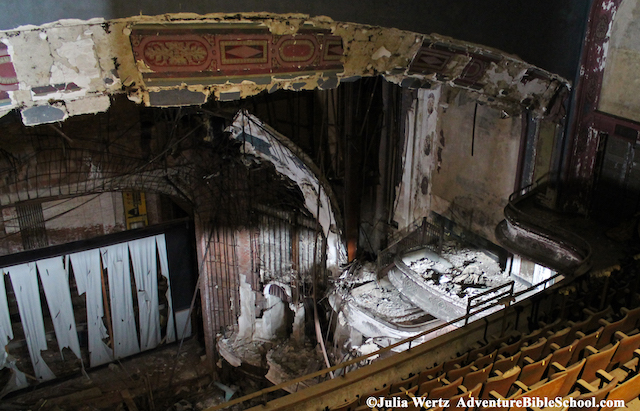
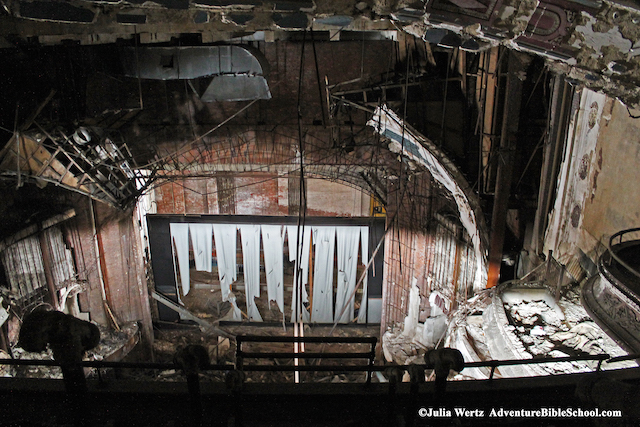
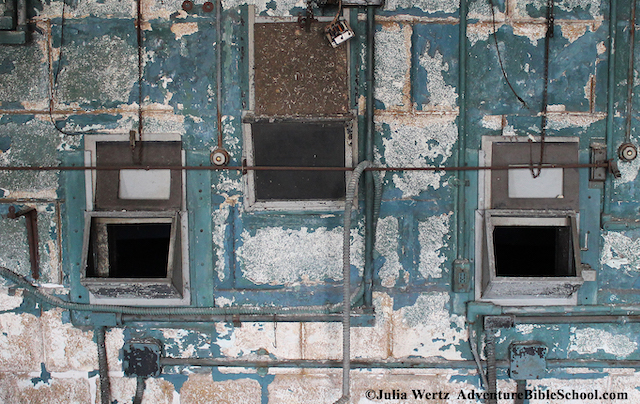
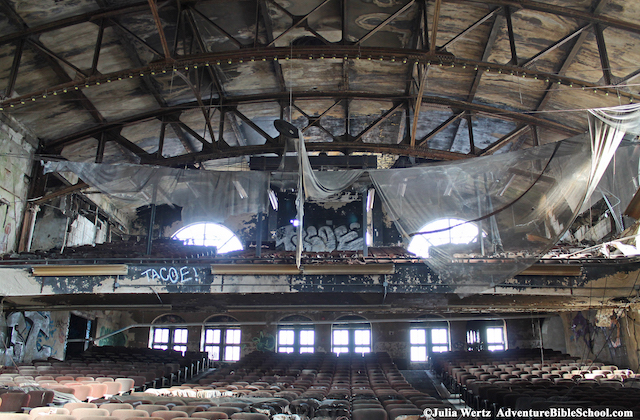
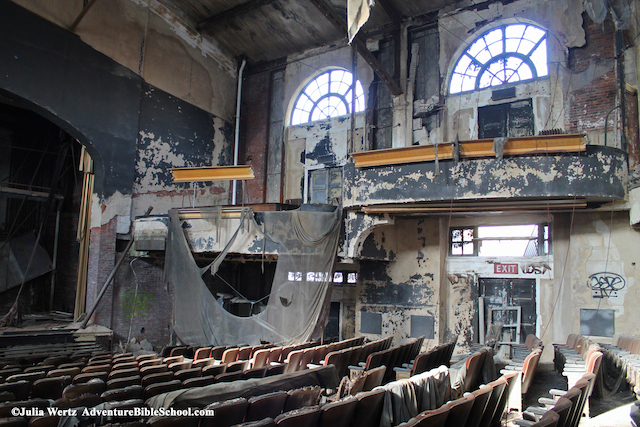
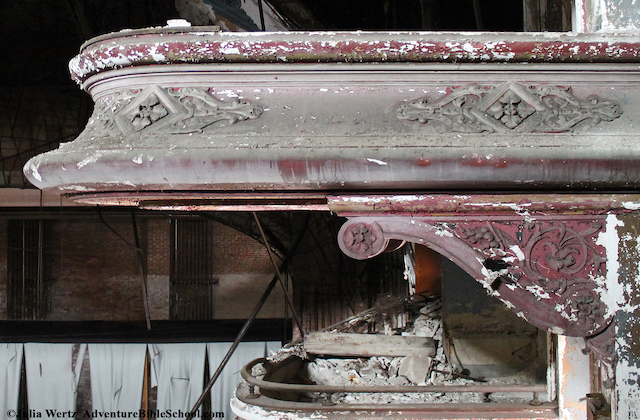
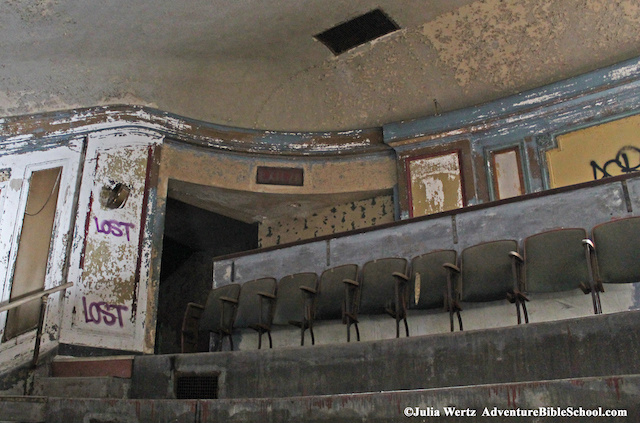
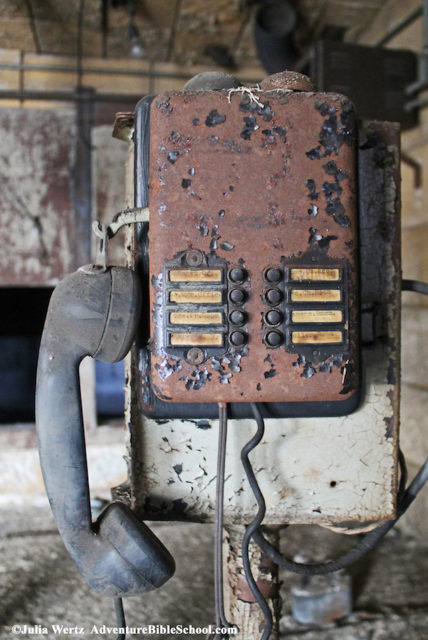
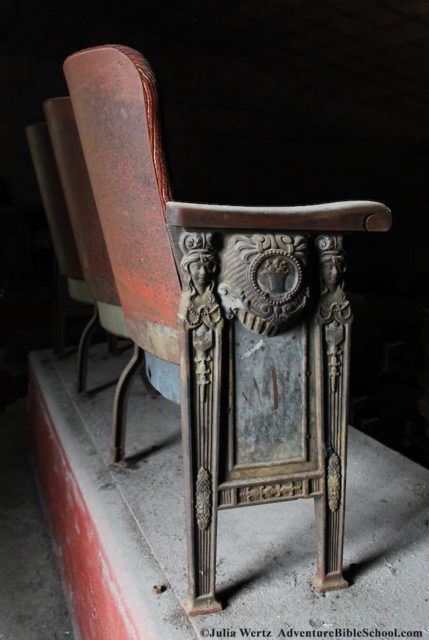
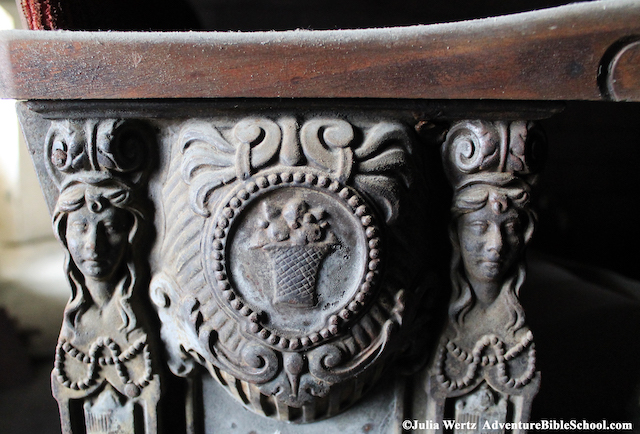
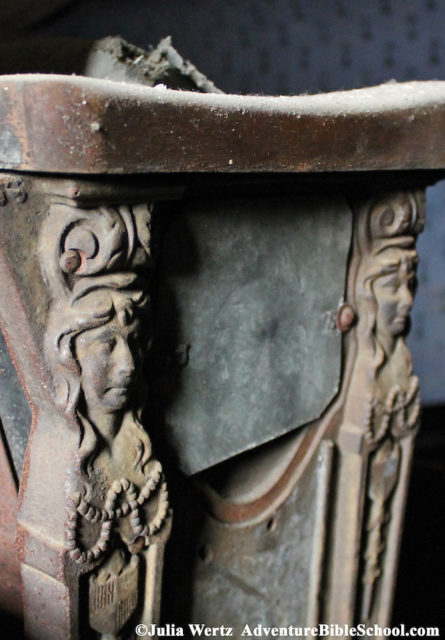
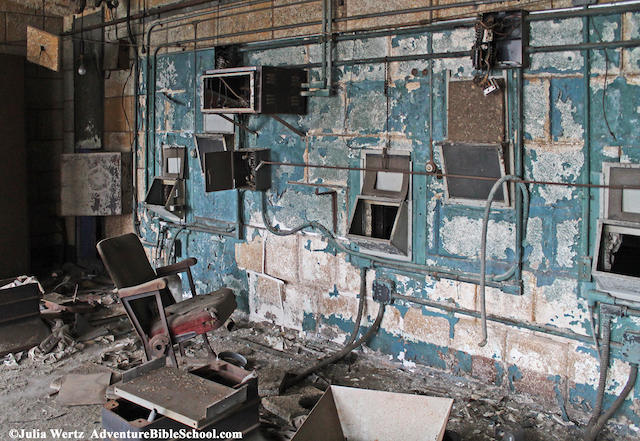
Another Article From Us: The Abandoned Cape Romano Dome House in Florida
